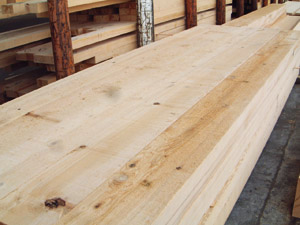Description£º
Western Hemlock (Tsuga heterophylla) is also known as West Coast hemlock, Pacific hemlock, British Columbia hemlock, hemlock¨Cspruce, and western hemlock¨Cfir. It grows along the Pacific coast of Oregon and Washington and in the northern Rocky Mountains north to Canada and Alaska. A relative of western hemlock, mountain hemlock (T. mertensiana) grows in mountainous country from central California to Alaska. It is treated as a separate species in assigning lumber properties. The heartwood and sapwood of western hemlock are almost white with a purplish tinge. The sapwood, which is sometimes lighter in color than the heartwood, is generally not more than 2.5 cm (1 in.) wide. The wood often contains small, sound, black knots that are usually tight and dimensionally stable. Dark streaks are often found in the lumber; these are caused by hemlock bark maggots and generally do not reduce strength. Western hemlock is moderately light in weight and moderate in strength. It is also moderate in hardness, stiffness, and shock resistance. Shrinkage of western hemlock is moderately high, about the same as that of Douglas-fir (Pseudotsuga menziesii). Green hemlock lumber contains considerably more water than does Douglas-fir and requires longer kiln-drying time. Mountain hemlock has approximately the same density as that of western hemlock but is somewhat lower in bending strength and stiffness. Western hemlock and mountain hemlock are used principally for pulpwood, lumber, and plywood. The lumber is used primarily for building material, such as sheathing, siding, subflooring, joists, studding, planking, and rafters, as well as in the manufacture of boxes, pallets, crates, flooring, furniture, and ladders.

